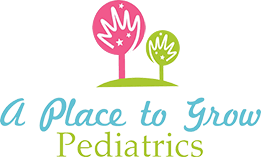Pediatrics - Seborrhea, Cradle Cap
Introduction
Seborrhea, also called Seborrheic Dermatitis, is a common skin condition. When it occurs on the scalp it is called dandruff. Seborrhea on a baby’s scalp is called cradle cap.
Seborrhea describes red scaly itchy skin. The affected areas produce white or yellowish flakes. Seborrhea can develop on the scalp, face, or skin folds on the body. It is a life long condition that can be controlled with treatment.
Anatomy
Causes
Symptoms
Diagnosis
Treatment
Prevention
Am I at Risk
Is My Child at Risk?
Risk factors may increase your child’s likelihood of developing seborrhea. People with all of the risk factors may never develop the condition; however, the chance of developing seborrhea increases with the more risk factors your child has. You should tell your doctor about your child’s risk factors and discuss your concerns.
Risk factors for seborrhea:
_____ Seborrhea is more common in men than women. In men, it may develop in moustache and beard areas.
_____ Seborrhea appears to run in families. If a child’s parents or siblings have seborrhea, a child has an increased risk for developing it.
_____ Oily skin is associated with seborrhea.
_____ Obesity appears to increase the risk of seborrhea formation, particularly in skin folds.
_____ Using soap and shampoo products that contain alcohol appear to increase the risk of developing seborrhea.
_____ Neurological conditions, such as Parkinson’s Disease, stroke, and traumatic brain injury, are associated with seborrhea.
_____ Medical conditions that depress the immune system, such as HIV and AIDS, are associated with seborrhea.
_____ Skin disorders, such as acne, increase the risk of seborrhea.
Complications
Advancements

Copyright © - iHealthSpot Interactive - www.iHealthSpot.com
This information is intended for educational and informational purposes only. It should not be used in place of an individual consultation or examination or replace the advice of your health care professional and should not be relied upon to determine diagnosis or course of treatment.
The iHealthSpot patient education library was written collaboratively by the iHealthSpot editorial team which includes Senior Medical Authors Dr. Mary Car-Blanchard, OTD/OTR/L and Valerie K. Clark, and the following editorial advisors: Steve Meadows, MD, Ernie F. Soto, DDS, Ronald J. Glatzer, MD, Jonathan Rosenberg, MD, Christopher M. Nolte, MD, David Applebaum, MD, Jonathan M. Tarrash, MD, and Paula Soto, RN/BSN. This content complies with the HONcode standard for trustworthy health information. The library commenced development on September 1, 2005 with the latest update/addition on February 16, 2022. For information on iHealthSpot’s other services including medical website design, visit www.iHealthSpot.com.



